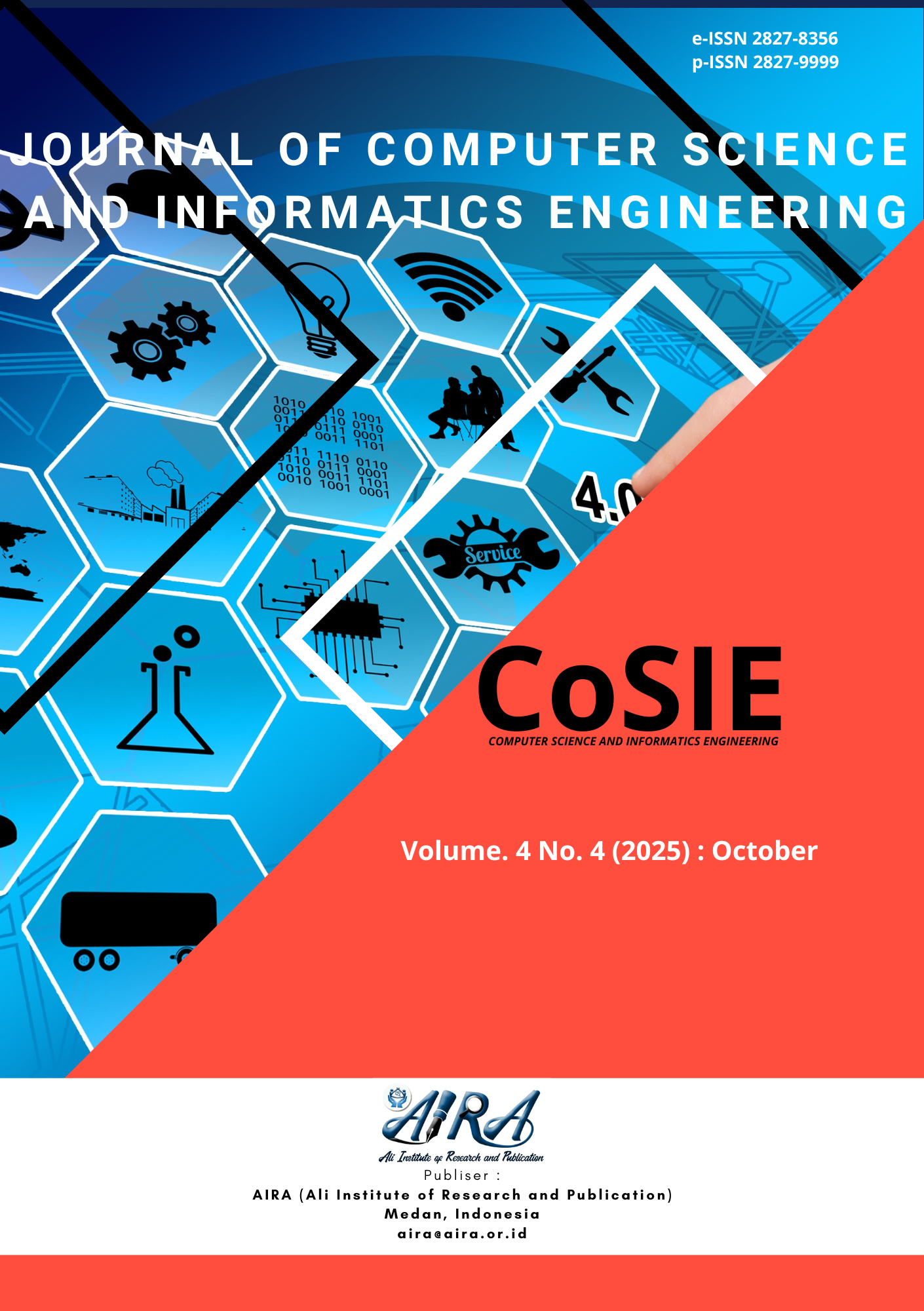Determinant Factors of Revisit Intention to Museum: Integration of Technology Acceptance Model and Expectation Confirmation Theory
DOI:
https://doi.org/10.55537/cosie.v4i4.1202Keywords:
museum, digital technology, TAM, ECT, revisit intentionAbstract
The development of digital technology is progressing very rapidly. Museums as cultural centers need to adopt digital technology to give different experiences for visitors. Museum Sonobudoyo also starts using digital technology. The technology used varies, from animated films, Virtual Reality (VR), to interactive screens. Visitors can enjoy these technologies and may revisit the museum if they are satisfied. This research tries to examine the factors that determine revisit intention of the visitors from the perspective of Technology Acceptance Model and Expectation Confirmation Theory. Data collection was carried out during period May – June 2024 by distributing questionnaires to museum visitors. A total of 160 valid questionnaires were collected and processed using Partial Least Square Structural Equation Modeling (PLS-SEM) with the help of SmartPLS 3.0 software. The results show that the factors which determine revisit intention are perceived usefulness, using digital technology, confirmation, and satisfaction. This research contributes to the existing knowledge in museum’s technology adoption and integration between TAM and ECT theories. Not only theoretical contribution, the result of this research also has practical contributions to the development of museum strategies. By knowing the factors that may influence visitors’ revisit intention, museums may consider these factors when planning to use other digital technologies.
Downloads
References
[1] S. Dong, “Research on the application of digital media technology in museum exhibition design: a case study of the national museum of Singapore,” in International Conference on Digital Economy and Business Administration, SHS Web of Conference, 2024, pp. 1–8.
[2] I. M. Al Barroh, “Membuat Generasi Muda Lebih Dekat dengan Museum.” Accessed: Jan. 21, 2024. [Online]. Available: https://www.sonobudoyo.com/id/tulisan/read/membuat-generasi-muda-lebih-dekat-dengan-museum
[3] M. Abdu, “Tren Anak muda Berkunjung ke Museum Masa Kini.” Accessed: Jan. 21, 2024. [Online]. Available: https://www.sonobudoyo.com/id/tulisan/read/tren-anak-muda-berkunjung-ke-museum-masa-kini
[4] U. N. Fauziah, “Museum Date Tren Anak Muda yang Hidupkan Kembali Museum.” Accessed: Jan. 21, 2024. [Online]. Available: https://www.sonobudoyo.com/id/tulisan/read/museum-date-tren-anak-muda-yang-hidupkan-kembali-museum
[5] Anping Cheng, Dongming Ma, Younghwan Pan, and Hao Qian, “Enhancing Museum Visiting Experience: Investigating the Relationships Between Augmented Reality Quality, Immersion, and TAM Using PLS-SEM,” Int J Hum Comput Interact, pp. 1–12, Jun. 2023.
[6] R. M. Tawafak et al., “Analysis of E-Learning System Use Using Combined TAM and ECT Factors,” Sustainability, vol. 15, pp. 1–19, Jul. 2023.
[7] B. P. Pradana, “Investigating the Repurchase Intention of E-Commerce Users from Service Quality and Expectation-Confirmation Theory Perspectives,” Jurnal Informasi dan Teknologi, vol. 4, no. 3, pp. 127–135, Aug. 2022.
[8] P. Pakarti, B. S. Dharmmesta, S. S. Nugroho, and B. Sutikno, “Review of Customer Experience, Perceived Effectiveness of E-Commerce Institutional Mechanisms, and Repurchase Intention from The Perspective of Expectation-Confirmation Theory,” Journal of Applied Management, vol. 20, no. 1, Mar. 2022.
[9] M. N. Abdul Aziz, S. N. Harun, M. K. Baharom, M. K. Ramlie, and A. S. Shuib, “The Acceptance Level of Digital Natives towards The Interactive Kiosk in the Museum: TAM-Based Research Instrument,” TEST Engineering and Management, vol. 81, pp. 1032–1044, 2019, Accessed: Apr. 20, 2024. [Online]. Available: http://testmagzine.biz/index.php/testmagzine/article/view/153
[10] M. N. Abdul Aziz, S. N. Harun, M. K. Baharom, N. Kamaruddin, and N. Zamin, “The relationship between interactive kiosk design towards usage intention in the National Music Museum of Malaysia,” Museum Management and Curatorship, vol. 39, no. 4, pp. 518–538, Mar. 2023, doi: https://doi.org/10.1080/09647775.2023.2188475.
[11] B. Nadhiroh, T. L. M. Suryanto, and E. M. Safitri, “Analisis Penerimaan Digital Teknologi pada E-Museum SIMVONI Menggunakan Teknologi Acceptance Model,” Jurnal INTEK, vol. 5, no. 1, pp. 90–97, May 2022.
[12] H. J. Zhang, C. Y. Fang, and P. M. C. Lin, “AR Service Quality and Adoption Intention in Museums: The Mediating Role of Perceived Value and the Moderating Effect of Intracultural Differences.,” Journal of Quality Assurance in Hospitality & Tourism, pp. 1–30, Jun. 2024, doi: https://doi.org/10.1080/1528008X.2024.2365874.
[13] J. F. , J. Hair, G. T. Hult, C. M. Ringle, and M. Sarstedt, A Primer on Partial Least Square Structural Equation Modeling (PLS-SEM), 3rd ed. Los Angeles: SAGE Publications Inc, 2022.
[14] S. F. Persada, B. A. Miraja, R. Nadlifatin, P. F. Belgiawan, A. A. N. P. Redi, and S.-C. Lin, “Determinants of Students’ Intention to Continue Using Online Private Tutoring: An Expectation-Confirmation Model Approach,” Technology, Knowledge and Learning, vol. 27, pp. 1081–1094, Jun. 2021, doi: https://doi.org/10.1007/s10758-021-09548-9.
[15] M. S. Allen, D. Iliescu, and S. Greiff, “Single Item Measures in Psychological Science,” European Journal of Psychological Assessment , vol. 38, no. 1, pp. 1–5, 2022, doi: https://doi.org/10.1027/1015-5759/a000699.
[16] R. A. Matthews, L. Pineault, and Y.-H. Hong, “Normalizing the Use of Single Item Measures: Validation of the Single Item Compendium for Organizational Psychology,” J Bus Psychol, vol. 37, pp. 639–673, Apr. 2022.
[17] B. P. Pradana, “Investigating the Repurchase Intention of E-Commerce Users from Service Quality and Expectation-Confirmation Theory Perspectives,” Jurnal Informasi dan Teknologi, vol. 4, no. 3, pp. 127–135, 2022.
[18] Yanto, Z. Rahmani, A. R. Putra, and M. A. Samsudin, “What Makes Gen Z in Indonesia Use P2P Lending Applications: An Extension of Technology Acceptance Model,” Jurnal Sistem Informasi (Journal of Information System), vol. 20, no. 1, pp. 1–22, Apr. 2024.
Downloads
Published
How to Cite
Issue
Section
License
Copyright (c) 2025 Intan Istiqomah

This work is licensed under a Creative Commons Attribution-ShareAlike 4.0 International License.






